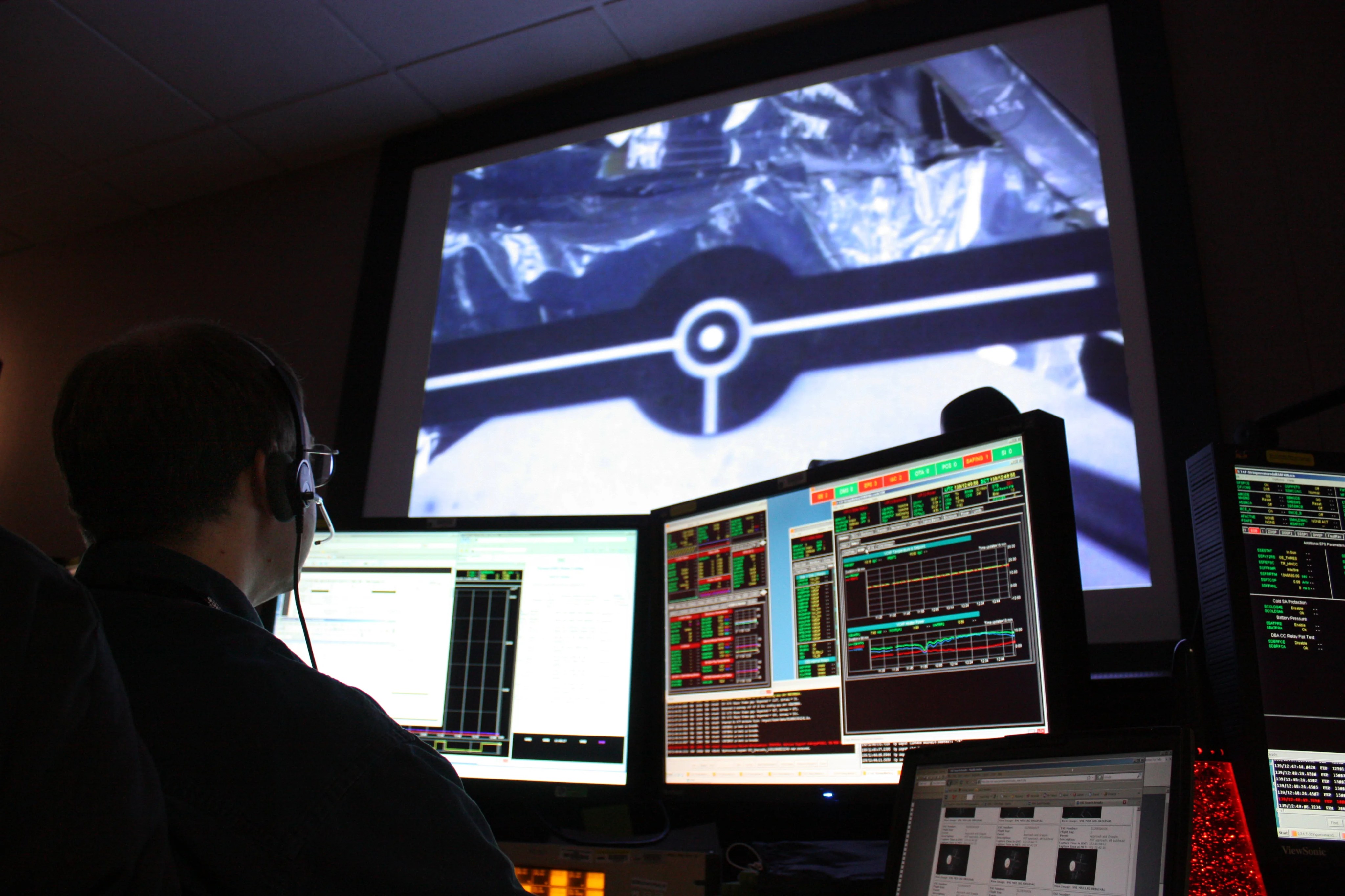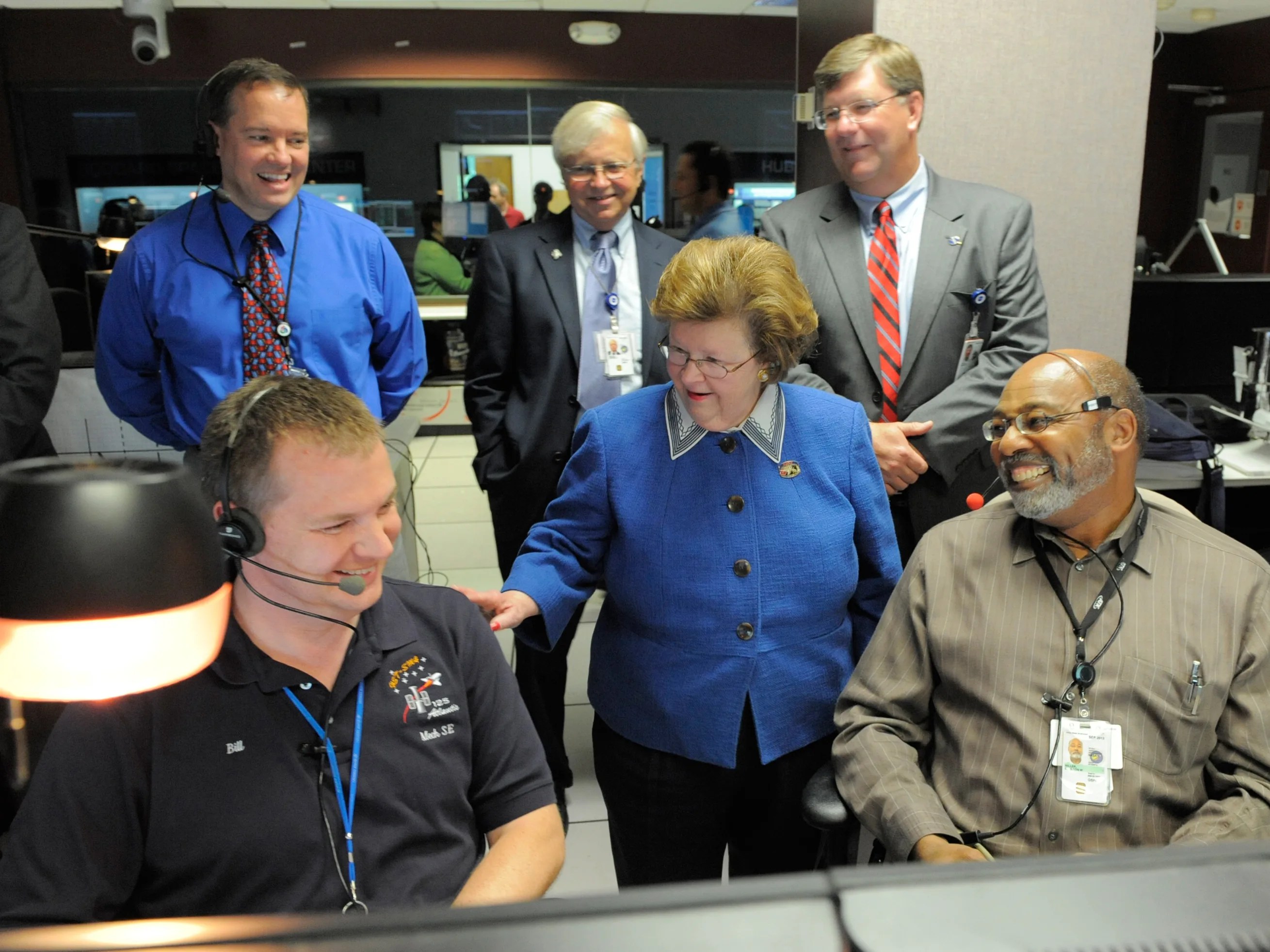3 min read

An operator in Goddard's Space Telescope Operations Control Center keeps a watchful eye on his readouts as shuttle Atlantis deploys the Hubble Space Telescope on May 19, 2009.
Credit:
NASA/Wade Sisler

Maryland Sen. Barbara Mikulski visited Goddard's Space Telescope Operations Control Center on May 19 to watch the Hubble deployment. Behind her (left to right) are Hubble Servicing Mission Operations Manager Keith Walyus, Science Directorate Associate Administrator (and former Goddard center director) Dr. Ed Weiler and Goddard Center Director Rob Strain.
Credit:
NASA/Pat Izzo
The Hubble Space Telescope has been with us for nearly two decades. In that time, its breathtaking images have captured people’s imaginations and its groundbreaking science has revealed some of the many secrets of our universe.
This morning, at precisely 8:57 a.m. ET, a carefully orchestrated maneuver was carried out 350 miles above the Atlantic coastline of Africa, marking the successful end of the fifth and final shuttle servicing mission.
Ever so gently, the Atlantis crew released the grapple fixture on the shuttle’s robotic arm, allowing Hubble to resume orbiting Earth on its own, as it has done since its deployment in April 1990. After Hubble’s thousands of orbits, thousands of images, five tune-ups and countless discoveries, a space shuttle crew is leaving this great observatory for the last time.
Maryland Sen. Barbara Mikulski visited controllers in Goddard's Space Telescope Operations Control Center. Mikulski, who praised the Hubble team for their hard work and dedication during this mission.
Because of Hubble, we know the age of our universe. We know how planets are born. We’ve seen into the atmospheres of alien worlds. We’ve begun to unravel the mysteries of dark matter and dark energy.
But despite all of this telescope’s groundbreaking work, there are still discoveries to be made. Thanks to the hard work of seven astronauts and countless people on the ground, Hubble is at the apex of its capabilities.
Thanks to new gyros, new batteries, new thermal blanketing and new science instruments, Hubble is poised to peer deeper into the cosmos than ever before. Spectacular images and data should start flowing from Hubble in about three months, after controllers have checked out and calibrated each of the observatory’s instruments and systems.
After that, Hubble will continue to do what it’s done for 19 years now: making discovery after discovery, pushing the limits of what we can see and what we know about our universe, rewriting textbooks and amazing us with spectacular, amazing images like nothing we’ve ever seen.
As astronaut John Grunsfeld said at the end of the last Hubble spacewalk, “Hubble isn’t just a satellite. It’s about humanity’s quest for knowledge.” Thanks to this fifth and final shuttle servicing mission, Hubble can continue that quest for years to come.
Related Link:
Don Savage and Rob Garner
NASA's Goddard Space Flight Center







